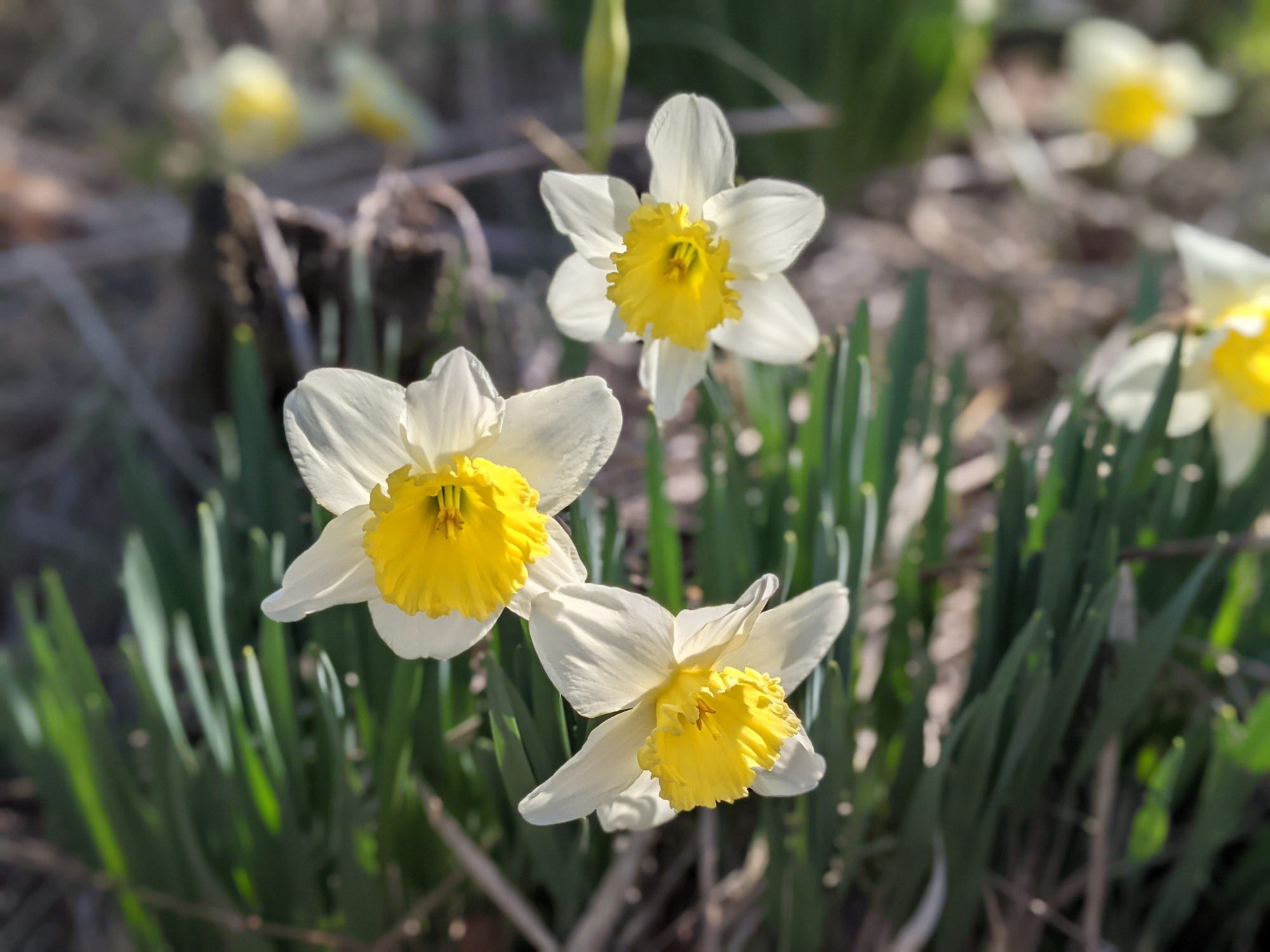
The vernal equinox has officially occurred, and it’s a sunny, warm, and exquisitely pleasant day. The daffodils knew – they suddenly burst from the sullen ground, their smiling faces beaming from the still-austere brown vegetation surrounding them. Trust the daffodils.
I marvel at how we move from dormancy into verdancy: many plants struggled to overwinter, and now, with the warmth, reach their green leaves to the sun. Chlorophyll is wonderful stuff – green plants’ built-in means of converting sunlight into food (via photosynthesis). On these kinds of days, I particularly envy them their efficient way of sustaining themselves…a method that converts carbon dioxide to oxygen.
Other plants have sprung up with great zeal, like the daylilies (these are from a newer group near the daffodils – I love how they spread and return each year in greater numbers). These spectacular flowers basically require no maintenance and just – magically – appear again each spring. There should be fanfare! By summer, there will be a proliferation of blooms that beg to made into wildcrafted wine. I will oblige, of course.
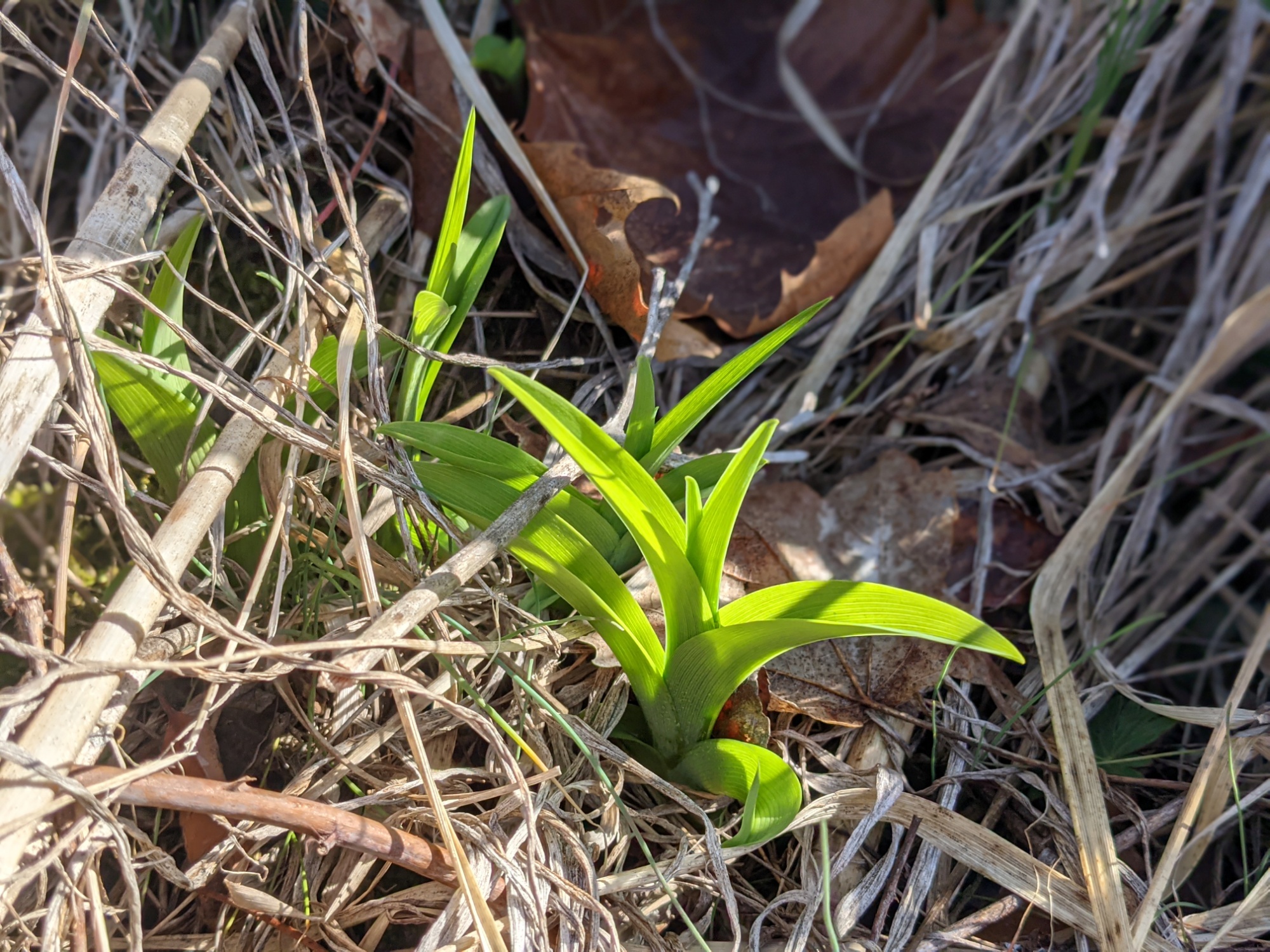
The chickweed overwintered under dead leaves and near structures that sheltered them from the biting wind. Poultry and people love chickweed – it’s nutritious and tasty, and can be eaten like spinach or made into a tasty wildcrafted wine. Guess what I’ll be doing with it later in the season?
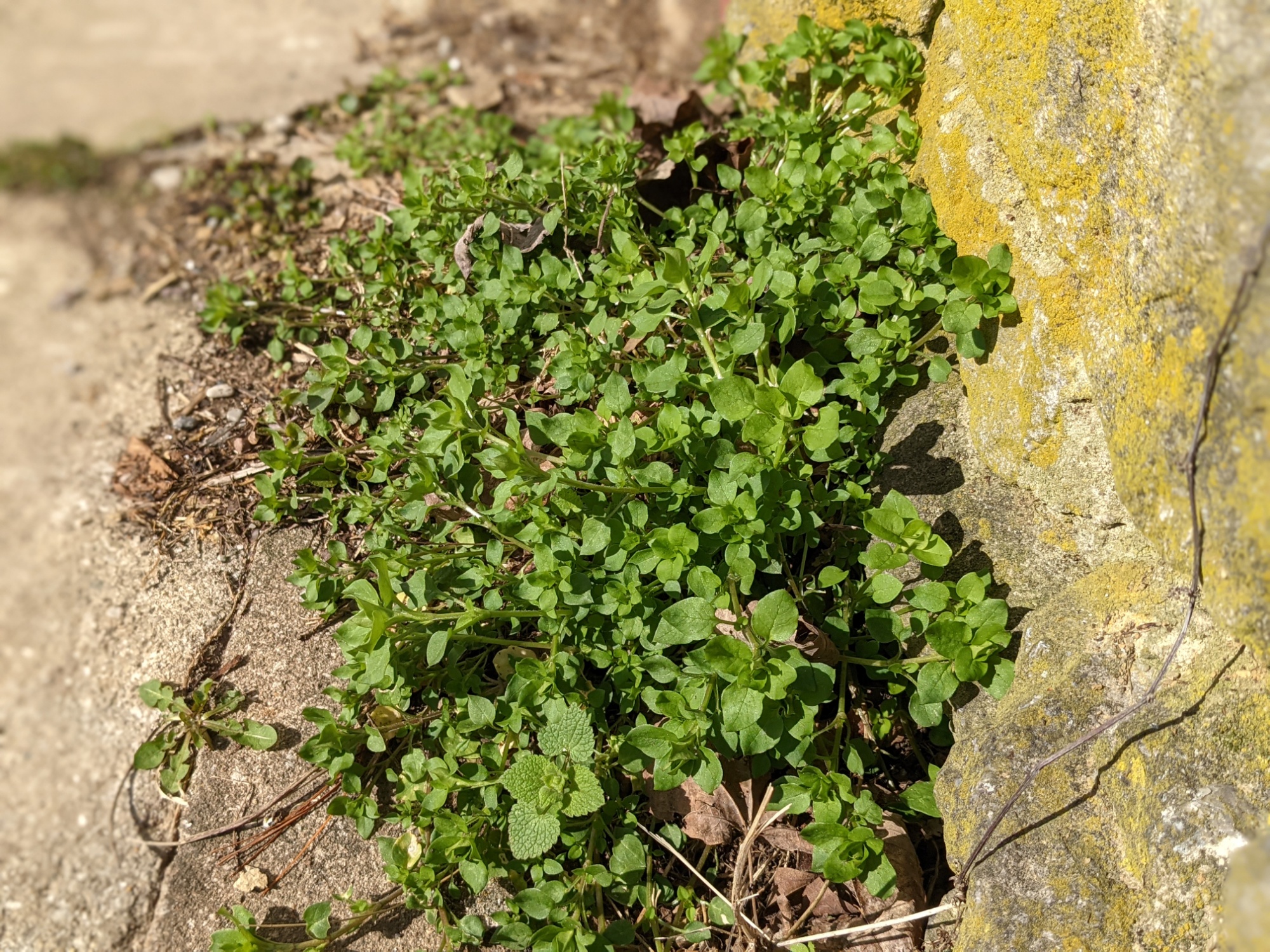
Purple deadnettle is rampant around here. Our pigs enjoy eating it, and it can be made into some interesting dishes, like this purple deadnettle rice bake. Oh, and it can be made into wildcrafted wine…a very earthy and unusual wine, but still enjoyable. These hardy plants survived the cold of winter and sprung forth with the smallest bit of warmth. Respect the deadnettle.
Another hardy plant that had reappeared is burdock. While it may look small and unassuming, it will grow into a seriously giant rosette of leaves.
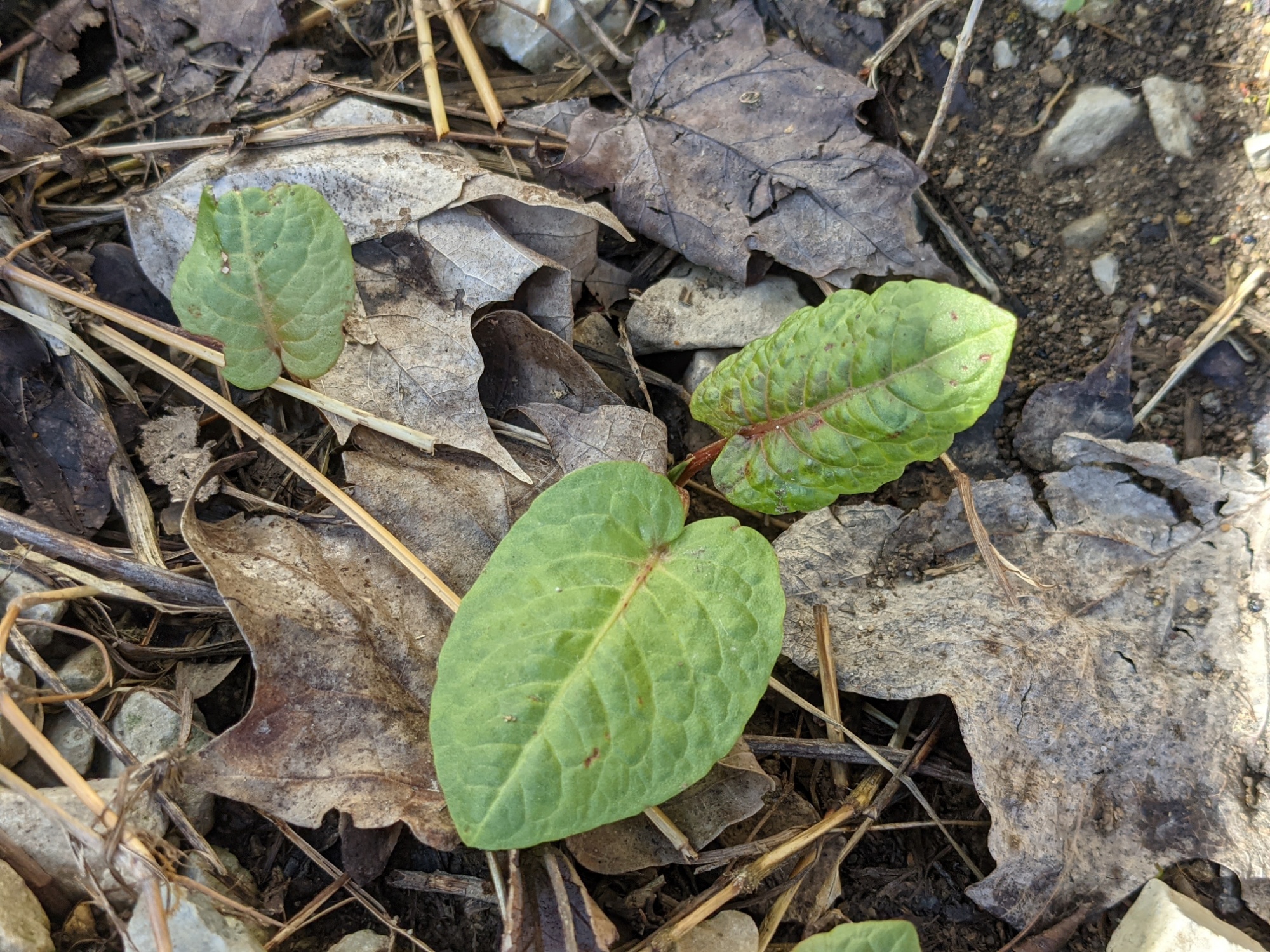
The lemon balm, also a favorite, overwintered in outdoor pots and have thrust forth their slightly fuzzy leaves from their pots. Wildcrafted wine material? Oh, yes…but also lovely in many other applications, like tea or sachets. The bees adore it, too.
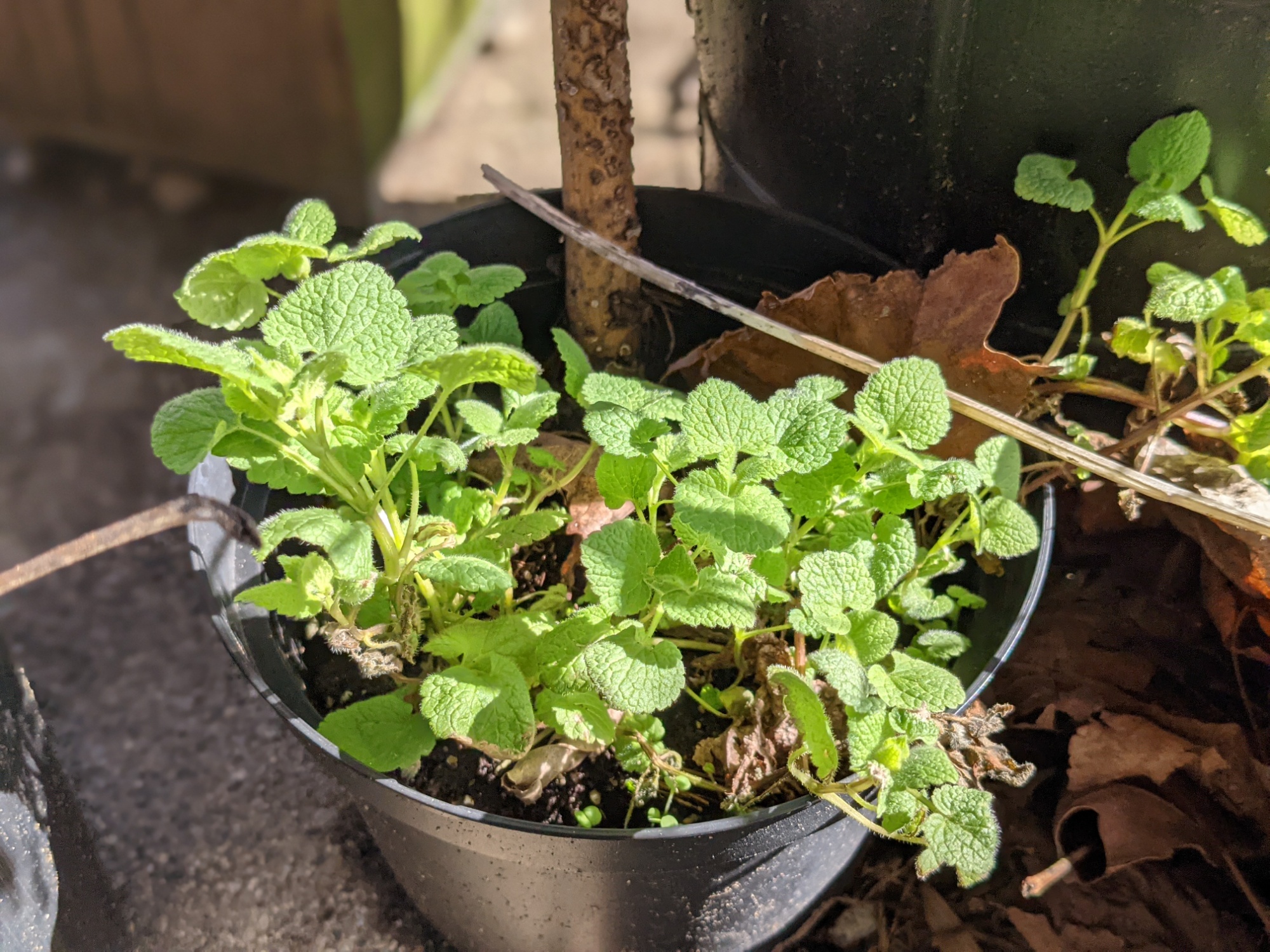
The daffodils may be considered “common” flowers, but their beauty is worthy of admiration. What exudes spring’s enthusiasm more than daffodils? May your spring be full of ordinary beauty and the wonders of nature.
